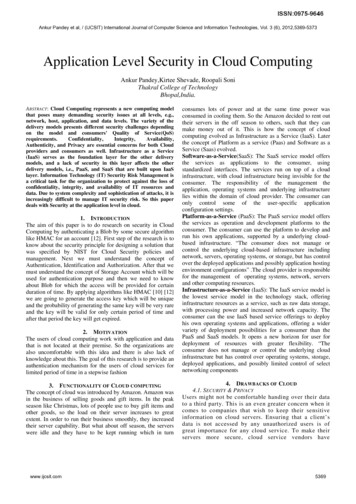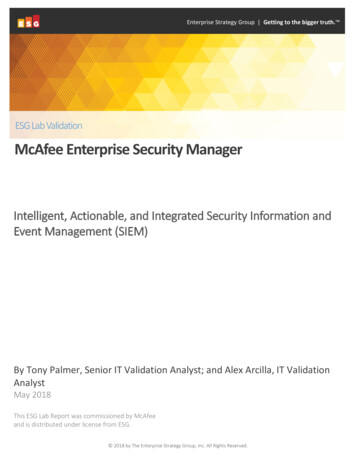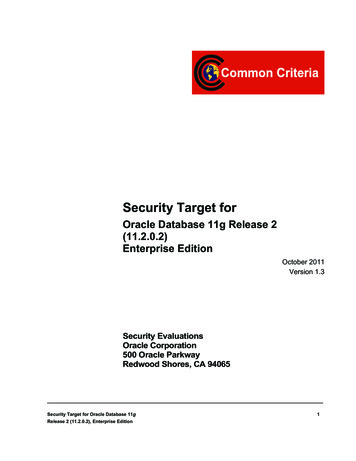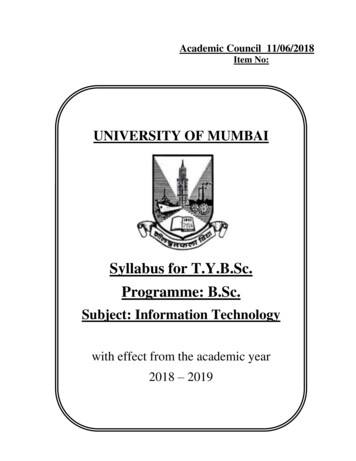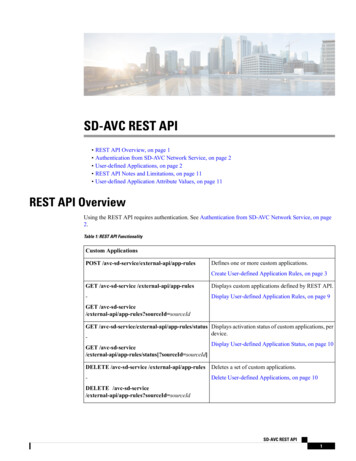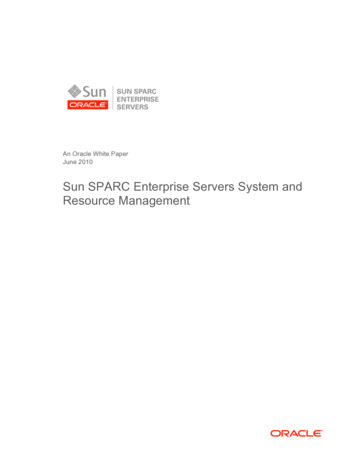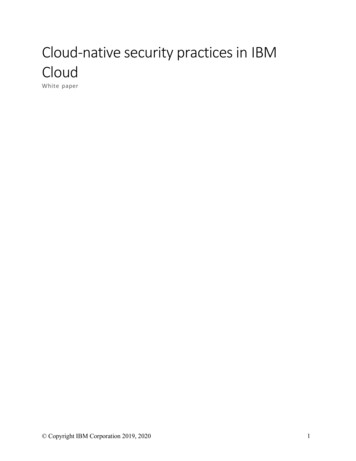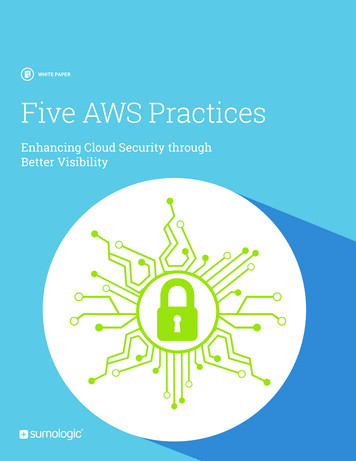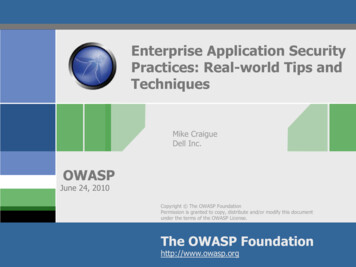
Transcription
Enterprise Application SecurityPractices: Real-world Tips andTechniquesMike CraigueDell Inc.OWASPJune 24, 2010Copyright The OWASP FoundationPermission is granted to copy, distribute and/or modify this documentunder the terms of the OWASP License.The OWASP Foundationhttp://www.owasp.org
AgendaSection One:Program OverviewSection Two:Consultant Team Dell’s Information SecurityOrganization Security Consulting StaffDevelopment Policies / Standards for SecureApplication Development Division of Labor for SecurityConsultants Awareness/Education/Training Risk Assessments Addressing Global StandardizationIssues Security Reviews Deploying an SDL as an Overlay tothe SDLC Source Code Scans Partnerships with Privacy, Legal,Compliance Threat Modeling Pre-deployment Scans Penetration Testing Q&AOWASP2
Section OneProgram OverviewOWASP3
Our Information Security OrganizationGlobal Information Security tingEngineeringIncidentResponse &AssuranceSecurity Consulting is the outward-facing informationsecurity team; our mission is to manage and reducesecurity risks for our Dell Business Unit customers (IT,Services, Product Group, etc.)OWASP4
Policies/Standards for App Dev Should be tied to root policy Complete standard re-write; tool-agnostic Socialization with developers, testers,compliance team, and VPs Approval at CIO staff was easy to get Revisions at procedure-level after 2 years Exception management and escalation processOvercoming concerns of developers, business partners,compliance, and IT execs requires front-line success storiesand realistic goals.OWASP5
Awareness, Education, and Training Outside speakers (Michael Howard from MS)Employee orientationAnnual privacy/security course for all employeesOne-time first course for developers30-minute crash courses on 10 topics via CBTSecurity Consulting portalSecurity User GroupsCommunities of PracticeHaving a marketing/communications specialiston the team helps immenselyOWASP6
Addressing Global Standardization Issues Enterprise Architecture standards review boardJava and .NETEclipse Ganymede, GalileoVS 2003 / 05 / 08XP, Vista, Windows 7MS Team Foundation Server for source controlASP 3.0, C, C , Python, Perl, PHP, VB, Cold Fusion, COBOLRed Hat, SUSE, Oracle Enterprise LinuxNovellVMWareAcquisitions and divestituresLack of a standardized developer desktop hasbeen one of our greatest challengesOWASP7
SDL Checkpoints in the SDLC Getting embeddedearly, with simplecheckpoints IT / Services /Product Grouptailoring Traditional versusAgile methodsBetter to be a phase reviewer throughout, thana change ticket approver at the endOWASP8
Agile SDL Checkpoints One Risk Assessment per Release (#1 on the diagrambelow) One Fortify scan per Sprint (#2 on the diagram below)OWASP9
Partnerships with Privacy, Legal, etc. Privacy – having EU representation on our privacy team has beencrucial Data Architecture Legal – lead security/privacy attorney Compliance – strong alliance with compliance reps for each IT org Vendor Management Office (IPSA) Product Group CTO Corporate Governance Enterprise Architecture / SDLC (Dev tools, processes) Service Oriented Architecture teamHaving escalation points and allies in each ofthese areas has been essentialOWASP10
Section TwoConsultant TeamOWASP11
Security Consulting Staff Development Global reach – Brazil, India, Malaysia, and US Hot Market, Retention issues DB, App, and Network subject matter experts Weekly meetings Global staff; 1:1 Manager / IC Scheduled, unstructured, and informal ―around the cubes‖ discussions Collaborative team training CISSP training group (3 rounds through Shon Harris)Onboarding deck and procedure docsfor everythingOWASP12
Division of Labor for Security Consultants IT, Product Group, Services Mergers, acquisitions, and divestitures Interaction with Red Team High-risk projects, at consultant’s discretion Project management Projects without a project charter—we don’t say ―no‖ Informal project management within our team Outreach and Corporate CommunicationsWe have at least one SME dedicated to Apps, DB, andNetworkOWASP13
Risk Modeler Tool, Risk Assessments, etc. This is our primary engagement mechanism, and it is the first security checkpoint in the SDLC.Spreadsheet approach was used prior to rollout of this toolTriage helps align most of our resources to high-risk projectsTool enhancements: Audit trail, Automated emails, SearchOn-the-fly question customization and weighted risk calculation Engagement types with targeted questions (internal software, infrastructure, and vendor apps) Major factors in risk calculation weightings Data ClassificationInternally / Externally facingSOX, PCI Low-risk - directed to self-help documentation and to our allies in compliance High-risk - usually have a security consultant in attendance at major project meetings/milestones,as well as penetration testing prior to launch Risk has impact on source code remediation requirements Need to mine data more deeply to follow up on some sorts of issues420 projects in 2008;726 projects in 2009;200 in Q1 2010OWASP14
Threat Modeling Initial emphasis on Product Group, Services during designphase Requires culture shift to doing Data Flow Diagrams Very time-consuming Resulting artifact is less important; having the conversationbetween security consultant and dev team is the key Dev lead or architect must attend CBA: Low-yield; 8-16 hours for 1-2 significant findings Adopting a light-weight threat modeling program for ITwith a quiet rollout Using new MS Threat Modeling tool 3.1 for PG/ServicesMore experienced security consultants do this analysisintuitivelyOWASP15
Source Code Scans Manual versus automated (MS 200, Dell 10) Great vendor partnership Evolving procedures for which rules are enforced Started with “top 5” hot issues XSS (MS Anti-XSS) SQL Injection (Stored procedures, least privilege, input validation) Buffer Overflow (C/C , PG) Hardcoded passwords (MS DPAPI) Weak encryption (rare) Now all hot issues, as well as certain mediums Very little impact in sheer numbers after “top 5” Back doors Exploring cloud-based scans for 3rd-party codePlan to start modestly and tighten the screws as theprogram matures. Plan for exception management.OWASP16
Pre-deployment Scans Source code scans have a sweet spot. For high-risk apps, we havefound a few additional issues via black/gray box testing May be our only option for languages/technologies not covered bysource scans Host OS findings not in synch with enterprise patch windows /SLA’s Entire Red Team in one time zone Most teams are ok with 1 week turnaround; recently, that hasbecome an issue Must build remediation time into the project timelineRisk-based, and at the consultant’s discretionOWASP17
Penetration Testing Routine, regulatory requirement Scope is a moving target Acquisitions New apps 10,000 legacy apps More thorough, manual testing by senior teammembers Opportunities for better coordinationThe real challenge is not issue discovery, butremediation.OWASP18
Lessons LearnedAdding ourselves into existing SDLCPartnering with other groupsLeveraging regulatory compliance for adoptionOne step at a time, one org at a time, show metrics, buildmomentum Exception management process, executive escalation,roadmaps SDL@Dell won the ISE North America Information SecurityProject of the Year Award for 2008 We’re doing fundamentals, not cutting edgeworkOWASP19
Q & A, Suggestions for Improvement Michael Craigue [ @] dell.comThanks to Phil Agcaoili, Addison Lawrence,Chad Barker, Neil Matatall, and Brad Shaver fortheir review and input!OWASP20
Manual versus automated (MS 200, Dell 10) Great vendor partnership Evolving procedures for which rules are enforced Started with "top 5" hot issues XSS (MS Anti-XSS) SQL Injection (Stored procedures, least privilege, input validation) Buffer Overflow (C/C , PG) Hardcoded passwords (MS DPAPI) Weak encryption (rare)



